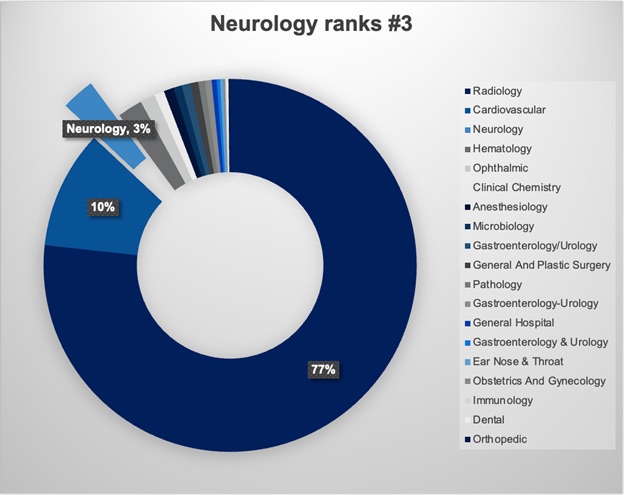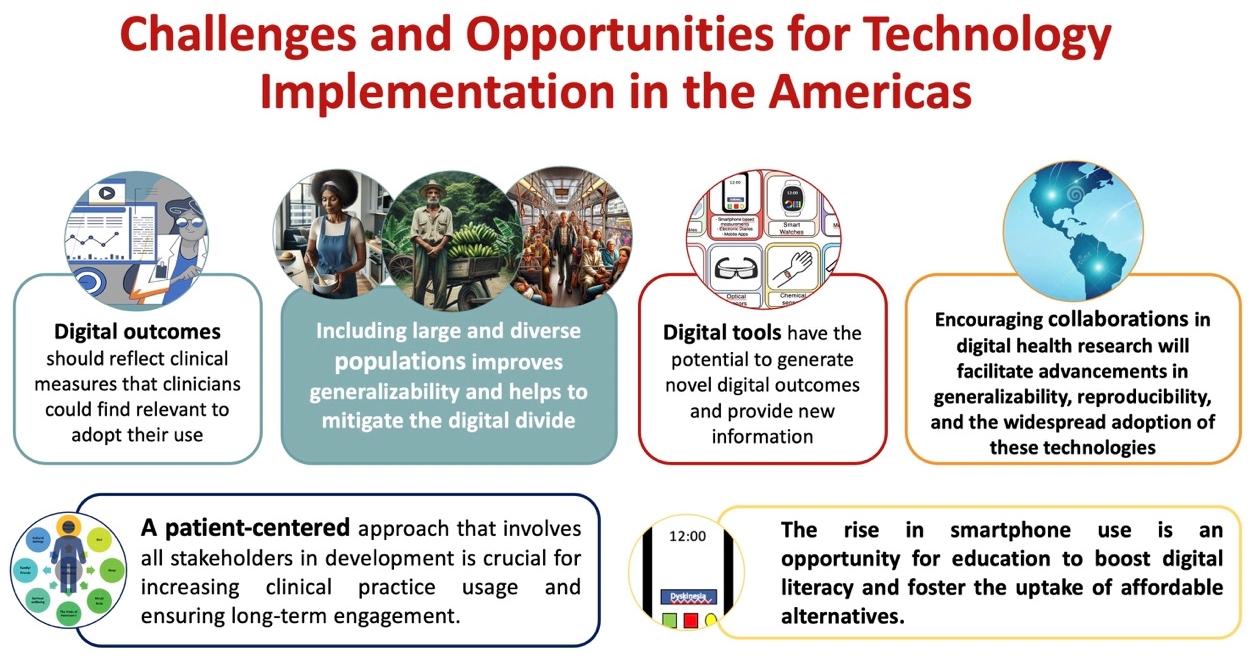 VOLUME 28, ISSUE 1 • March, 2024. Full issue »
VOLUME 28, ISSUE 1 • March, 2024. Full issue »

Insights from the 5th PAS Congress
In alignment with the 5th PAS Congress theme “A New Era of Technology for Movement Disorders in the Americas,” expert faculty presented a session on state-of-the-art Artificial Intelligence (AI) and technology in Movement Disorders. In three consecutive presentations, the faculty explored the role of AI in the healthcare of Movement Disorders, showed the newest available wearables, and analyzed the challenges and opportunities of technology adoption across the Americas.
Artificial Intelligence: Myths and Facts
Dr. Joaquin Vizcarra, USA
Dr. Vizcarra presented promising research and real-world examples of AI powering disease detection, objective assessment of phenomenology, clinical decision-making, and predicting therapeutic response in Movement Disorders.
Through an AI-assisted systematic review, attendees learned that Parkinson’s disease spearheads AI-related research amongst Movement Disorders. Promising lines of research exist in AI-powered disease detection, clinical decision-making, and predicting therapeutic response. However, further external validation of the AI algorithms is needed to support their use in the current healthcare of Movement Disorders.
Dr. Vizcarra argued that objective phenomenology assessments may be ready for translational applications in clinical care and research. AI caveats were explored, including the unexplainable nature of deep learning models, overfitting, and vulnerability to external attacks.
A snapshot of currently available AI-powered medical devices cleared by the FDA showed that Neurology ranks #3 amongst all specialties (Fig 1), illustrating that adopting AI in Movement Disorders is only a matter of time.
Finally, Dr. Vizcarra called for continued engagement of clinicians and fostering of transamerican collaboration to develop AI-powered technologies.

Out of 692 AI-powered medical devices, Neurology ranks #3 with 20 medical devices.
Wearable Devices in Parkinson’s Disease (PD)
Dr. Mayela Rodríguez-Violante, Mexico
Wearable devices have emerged as a promising tool to provide continuous, objective data on disease progression and treatment effectiveness, thereby enhancing personalized care and improving outcomes for patients.
Enhanced Monitoring and Personalized Treatment: Wearable technology has the potential to revolutionize PD management by enabling detailed monitoring of symptoms. This continuous stream of data can assist healthcare providers in tailoring treatment plans to the individual's specific needs and symptoms, allowing for adjustments in medication dosages and timing, as well as the optimization of therapeutic strategies.
Improving Medication Adherence: Wearable devices serve as an innovative solution to the challenge of medication adherence in PD care. By providing reminders and tracking features, these devices can ensure timely medication intake, potentially reducing the risk of complications associated with missed doses and enhancing symptom control.
Facilitating Rehabilitation and Physical Activity: Wearables offer real-time feedback during rehabilitation exercises, empowering patients to improve motor functions and track their progress. This immediate feedback can increase engagement in rehabilitation programs and exercise regimens, accelerating recovery and functional independence.
Fall Detection and Prevention: A significant concern for individuals with PD is the risk of falls. Wearables equipped with detection algorithms can identify falls as they occur, promptly alerting caregivers and emergency services. Additionally, these devices can monitor gait and movement patterns to implement preventive strategies, thereby enhancing patient safety.
Prospects for Remote Monitoring and Cognitive Rehabilitation: Remote monitoring capabilities of wearables can reduce the frequency of hospital visits, providing convenience, especially for patients in remote areas. Moreover, wearable devices hold promise for cognitive rehabilitation through engaging and personalized interventions, which could mitigate cognitive decline associated with PD.
Despite the potential benefits, the adoption of wearables faces challenges such as data privacy concerns, the need for user-friendly and affordable designs, and the necessity of ongoing research to refine technologies and validate their use in clinical settings. Addressing these challenges is crucial for the successful integration of wearables into PD management.
The future of wearables in PD care is bright, with the potential to integrate with therapeutic interventions like deep brain stimulation, serve as digital biomarkers for early diagnosis and disease progression, and offer new avenues for managing non-motor symptoms. As research advances, wearables are poised to transform the management of PD, leading to enhanced patient outcomes and quality of life.
Challenges and Opportunities for Technology Implementation in the Americas
Dr. Catalina Cerquera-Cleves, Colombia
Dr. Cerquera-Cleves discussed the experiences of movement disorders specialists in the Americas with the use of digital tools, including the barriers and limitations they perceive. She also shed light on the challenges in integrating digital health tools into clinical practice while identifying significant opportunities for advancement.
Main challenges |
|
Main opportunities |
|
In conclusion, the integration of digital health technologies in the Americas faces numerous challenges. However, there are significant opportunities to improve patient care through collaborative efforts and a patient-centered approach. Emphasizing inclusivity and fostering collaborative data sharing are key strategies for overcoming these challenges and harnessing the potential of digital health tools (Fig 2).

Conclusions on the main challenges and opportunities for technology implementation in the Americas.
Read more Moving Along:






